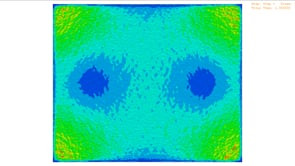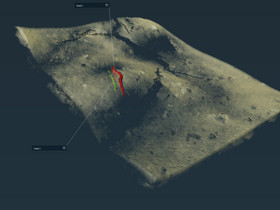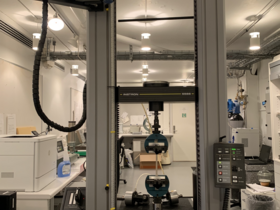
Simulation of desiccation of a canvas painting
Creation of a computational degradation model of canvas paintings is our most important task in the CollectionCare project. In a previous blogpost we have explained the complexity of the computational degradation model of a typical canvas painting, and, in this blogpost, we will show a preliminary result from the simulations.
The degradation model is used to study and predict degradation of canvas paintings by simulating various scenarios. For example, what will happen to the painting if the temperature or the relative humidity (RH) drops or rise, significantly or just a little, quickly, or slowly? Or how big and how quickly should a change in temperature or RH be before the painting gets affected (or degraded)?
We have conducted several of these simulation studies. The video below shows a simulation of a canvas painting under desiccation from 50 to 10% RH. The square is the modelled canvas painting, consisting of five layers: wooden stretcher, canvas, glue, ground, and paint. The change in color illustrates the distribution of stresses in the painting: blue is referring to the smallest amount of stress, red is referring to the highest amount of stress.
The video illustrates that the general stress distribution in the painting increases during the 40% desiccation. It is clear, that the corners experience the highest stresses, whereas it is less dramatic in the center of the painting. The tests have indicated that it generally requires significant humidity changes to make paintings crack.
This and similar results will help determine the climatic safe zones for canvas paintings from which we will form our guidelines for preservation of canvas paintings.


















